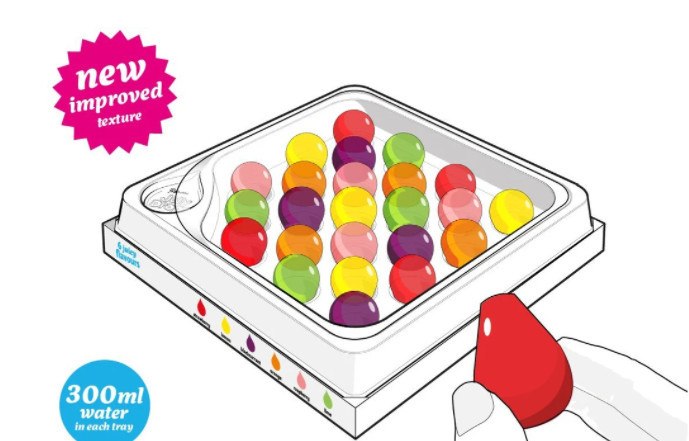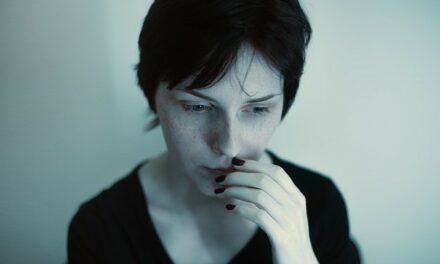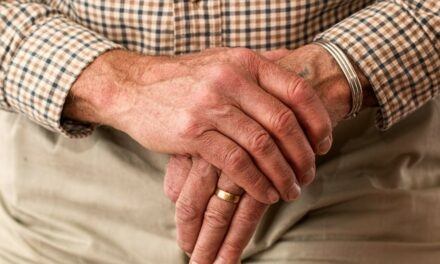Dehydration is common among the elderly, especially those with dementia. The aged are more susceptible to dehydration than the younger ones because of body changes like reduced thirst sensation and changes in their plasma electrolyte content.
Here I look into explore more about edible water for hydration. Among many questions I will be answering here, there is one of the popular too. When To Consider Edible Water To Hydrate Elderly? When Not To Use Edible Water For Hydration.
Very commonly, caregivers of the elderly always present their elderly with water more often than they should for fear of dehydration. Most aged persons’, especially those with memory problems, forgets or fail to see any reason for taking water, thus leading to dehydration, and coming down with other worse consequences.
With dehydration in the elderly being a major public health concern in the world today, more efforts are being made to combat this health risk. And one of such efforts is in the Invent of Edible Water.
Let’s explore what Edible Water really is…
What is Edible Water?
Edible water is drinkable water packaged in an edible, biodegradable bubble.
In common terms, edible water balls are called ooho. Ooho is a small bubble of water encapsulated in an edible membrane made of seaweed and important electrolytes like calcium.
Edible water ball was created to reduce nonbiodegradable waste from a world littered with plastic water bottles. It provides a good and eco-friendly replacement to millions of plastic bottles.
To many, this may feel unreal. But let me introduce to you how the edible water works…
How Does Edible Water Work?
Edible water is not a very complicated product to make. As a matter of fact, it is a very small and concise blub of water.
To produce ooho or edible water, a frozen block of ice is immersed in a solution of calcium chloride, which forms a layer over the ice. Then, the ball is bathed in a brown algae extract, forming a second layer that further reinforces the water ball.
How Can ooho Be consumed?
You can drink your ooho whole, by biting it down and eating and drinking, or you can consume it by tearing a hole into it and pouring it into your mouth and then disposing of the casing.
Benefits of Edible Water Bottles
- Hydration
What is the importance of a packed and bottled water, if not for easy hydration at any time of the day?
- Convenient to go
Just like any bottled water, edible water is conveniently drunk at any time and place. Although, handling and transporting it might be difficult.
- Nutrient filled
Edible water contains important body electrolytes, as well as rich algae.
- Eco-friendly
This is one of the reasons why the ooho was invented, to reduce the number of plastic bottles littered around the world.
Types of Edible Water
There are not many types of edible water balls, except those produced by different company brands.
As easy as it is to make edible water ball, different water producing companies can make packaged clean and durable water and store in edible water balls, and add their brand names to these balls. That is by adding edible letters in between the layers of the water balls.
Edible Water Bottles vs. Jelly Drops – What’s the Difference?
The Jelly Drops is often referred to as edible water, and by some, considered as a type of edible water. But there are a few differences between the Jelly Drops and edible water bottles.
What are Jelly Drops?
The Jelly Drops is a sweet produced to hydrate the elderly, especially those with dementia. It is made to be bite-sized, sugar-free and rich in water and electrolytes for increased benefits to its consumer.
A Jelly Drops contains about 95% water, and added electrolytes which play an important metabolic role in the body. They are produced in bright color and given firmer textures than the edible water.
How Does Jelly Drops Work?
Jelly Drops was invented to hydrate individuals that are highly prone to dehydrating, like the elderly and children.
Their bright colors seek to attract the attention of the consumer. Their small size makes it very easy to handle and consumed by either an elder or a child. And, the sweet taste of a Jelly Drops makes it favorable for hydration.
How Can a Jelly Drops Be Eaten?
Jelly Drops, being a majority of water in a firm and sweet blob, is very easy to chew. Simply handling it and tucking into it will take no further time.
What Makes The Jelly Drops Different From Edible Water?
Below are some differentiating properties between the Jelly Drops and edible water bottles:
- Jelly Drops is a healthy snack with large amounts of water. In contrast, edible water/ooho is water packed in edible layers.
- Jelly Drops has a sweet taste, unlike edible water, which has a sweet taste.
- Jelly Drops is firm and can be eaten, but the edible water is very flaccid, and is drunk rather than eaten.
- Jelly Drops has bright and attractive colors
- Jelly Drops are fun to eat.
- Jelly Drops contains natural flavors and important electrolytes, which are also found in edible water bottles.
- Jelly Drops are easier to handle than the edible water bottle.
- Jelly Drops has a fixed volume of water in it, as such easy to monitor and prevent dehydration.
Benefits of Jelly Drops
1. Hydration
Each tray of Jelly Drops contains 300ml of water. This measure of water taken from a sweet snack
in a day will provide adequate water, and significantly impact on a persons’ health and fluid intake.
2. Source of electrolytes
The important electrolytes of the body can be effectively replenished by the intake of Jelly Drops, as these have been made wholly available in Jelly Drops.
3. Engaging
The bright colors of the Jelly Drops, its sweet taste, and its firm nature makes it easy for it to be snacked down all day.
4. Cost-effective
5. Vegan-friendly
The Jelly Drops is considered as another kind of edible water important for hydration, even though Jelly Drops is different from the conventional edible water bubble. Thus, subsequently, the term edible water will cover both ooho and Jelly Drops.
When To Consider Edible Water To Hydrate Elderly?
Diane k. Bunn said in 2019 that 20% of older adults in residential care has low-intake dehydration. The case of dehydration today in the world has become a major health concern.
Dehydration is very common among children and the elderly, especially those with dementia or Alzheimer’s disease.
In view of this health problem, the Jelly Drops, as edible water was developed. The Jelly Drops as a hydrant can be used by anyone and not just the elderly.
Now the question remains, when can I consider using edible water?
The answer to this question will depend on what age-group, or class of individual one wishes to keep hydrated.
- For the aged, when is very challenging to get them to regularly hydrate
In this case, consider edible water when you observe these early signs of dehydration:
dry skin,
less urination,
dry and sticky lips,
headaches, and
lack of energy.
If these early signs are detected, the Jelly Drops edible water should be considered to frequently hydrate these old adults.
- In children and babies, when it is a bit challenging to get them to drink enough water
The reason for this scenario being that some children do not appreciate the taste of water, and others don’t know quite the importance of water to their bodies.
Some children hardly find any time to take water to rehydrate themselves because they spend all time of the day playing games or watching TV. If any of these be the reason for dehydration in a child, it will be wise to consider Jelly Drops edible water.
- For the sick, hydration is paramount and essential to their healing processes
The sick may be too weak to get themselves water, or unable to say how tasty they may be, and so, if symptoms of dehydration is observed, it is proper to consider use of Jelly Drops edible water.
Even so, as you know, there is a special group of sick elderly with dementia and extra challenges. These patients often get and often times hospitalized because of chronic dehydration.
Now why is it such a challenge for them to stay hydrated?
The Challenge in Hydrating Dementia Patients
Dementia is a socially associated disorder, that can affect the normal daily functioning of an individual.
Dementia is an illness that is commonly associated with old age, although it’s not a part of ageing. Dementia impairs ones ability to think, make decisions and even remember much of a daily activity. Alzheimer’s disease and dementia are sometimes used interchangeably.
Hydration, a dementia patient, is very challenging.
The reasons for this being;
1. Failure to identify feelings of thirst
With major parts of the brain affected by the disease, the older adult may not be able to trace any feeling of discomfort to its cause, and this is the case with thirst.
2. Forgetfulness
The inability to remember even important needs like water intake is a characteristic of the disease. They may not just forget the importance of drinking, but they might as well forget where they keep their water cups.
3. Challenge in walking or moving
With dementia, some older adults also have added physical disability that restricts mobility, and confines them to a particular part of their homes.
Some may experience muscle weakness, or arthritis. This can prevent them from taking or drinking water that may be too far for their reach.
4. Fear of water
This obnoxious feeling is the cause of their mental condition that impairs their thinking. Water may give them feelings of agitation and anxiety, and thus, they abhor all and any water-related tasks like bathing, washing their hands and even drinking water.
5. Effects of medicine
Some of the medications these dementia patients are placed under have the effects of causing frequent urination. This will lead to the constant loss of body fluid which may be difficult to regain, if hydration is not frequent.
Does Edible Water For Dementia Patients Work?
There are several ways and tips to ensure a dementia patient is kept hydrated. One of such tips is taking food that hydrates. Food that hydrates includes fruits that are rich in water like watermelon, oranges, and he likes.
Also, Jelly Drops edible water, is a food that hydrates. As has been described earlier, it contains about 95% of water, and a single tray of Jelly Drops gives 300ml of water to the body, sufficient for a day need.
What Does Research Say?
After the invent of Jelly Drops edible water, there have been a huge decrease in dehydration among the elderly. The product has seen sky rocking demands all over the world from care homes and families with people living with dementia.
Why is the product so successful, and what does scientific research have to say about it?
Jelly Drops edible water as a product is made into a tray of 24 bit sized balls water. Each tray is said to bag a total of 300ml of water, and six different flavors.
It was designed not to replace water, but to supplement it. That is, give added value and nutrients to the water. It is also a source of energy.
Below are the nutritional values in the Jelly Drops edible water.
|
Nutrition |
Per 100g |
Per Box (312g) |
|
Energy (kJ / kcal) |
54 / 13 |
156 / 37 |
|
Fat (g) |
0.0 |
0.0 |
|
of which saturates (g) |
0.0 |
0.0 |
|
Carbohydrate (g) |
3.7 |
11 |
|
of which sugars (g) |
0.0 |
0.0 |
|
Fiber (g) |
1.2 |
4.4 |
|
Protein (g) |
0.0 |
0.1 |
|
Salt (g) |
0.17 |
0.51 |
The benefits of this edible water to dementia patients prompted Colin Capper, head of research and development at the Alzheimer’s Society shows mundane interest in the product and is affirms its key importance in combating the everyday challenge faced by people living with dementia.
Conclusion
The Jelly Drops edible water has ensured the elimination of hydration challenges faced by older adults in the world today. If you live with someone with dementia, and you still haven’t considered Jelly Drops for them, you may be risking their health.
Saying so, you should always seek health professional input before making alternations to the lifestyle of the elderly.











